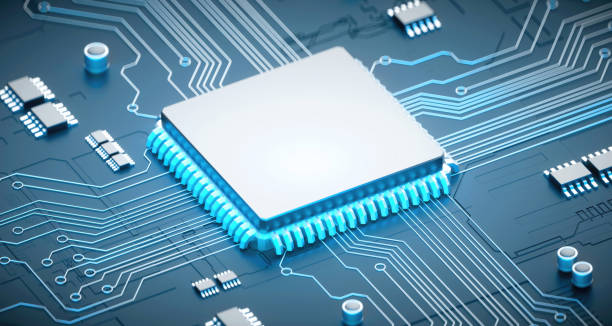Every time you swipe your smartphone screen, start your car, or turn on your laptop, you are relying on one of the most transformative technologies ever created: the semiconductor. These tiny materials, often smaller than a grain of rice, power the modern world by controlling how electricity flows through electronic devices. From computers and satellites to washing machines and medical equipment, semiconductors are the invisible foundation of the digital age.
Understanding how semiconductors work requires exploring the relationship between physics, chemistry, and electrical engineering. At their core, semiconductors manipulate the movement of electrons—tiny charged particles—to perform logical operations and store data. Though the science may seem complex, the basic principles are both elegant and comprehensible when broken down step by step.
The Essence of Semiconductors
A semiconductor is a material whose electrical conductivity falls between that of a conductor and an insulator. Conductors, such as copper and aluminum, allow electric current to flow freely because their electrons are loosely bound and move easily between atoms. Insulators, like rubber or glass, tightly hold onto their electrons, preventing current from passing through.
Semiconductors exist in the middle ground. They can behave as either conductors or insulators depending on their environment and how they are engineered. This duality is what makes them so powerful. By carefully controlling a semiconductor’s structure and composition, engineers can make it conduct electricity only under certain conditions. This selective control forms the basis of digital logic—the ability to represent “on” and “off,” or “1” and “0,” which underpins all computing.
The most widely used semiconductor material is silicon. Found abundantly in sand and rock, silicon has a crystalline structure that provides a stable and predictable foundation for manipulating electrons. Other semiconductor materials, such as germanium and gallium arsenide, are used for specialized applications, but silicon remains the industry standard due to its availability, cost efficiency, and favorable electronic properties.
The Atomic Structure of Semiconductors
To understand why semiconductors behave as they do, we must begin at the atomic level. Atoms consist of a nucleus containing protons and neutrons, surrounded by electrons that occupy specific energy levels or “shells.” The outermost shell, called the valence shell, determines how atoms interact with each other.
In conductors, the valence electrons are loosely held and can move freely, creating what is known as an electron sea. In insulators, the valence electrons are tightly bound, leaving no free carriers for current. Semiconductors, however, occupy a special position. Their valence electrons are moderately bound—tight enough to prevent free flow under normal conditions but loose enough that they can move when energy is supplied, such as through heat, light, or electrical voltage.
The key concept here is the energy band structure. In a semiconductor, there are two important energy regions: the valence band and the conduction band. The valence band contains electrons bound to atoms, while the conduction band is where electrons are free to move and conduct electricity. Separating these two is the band gap—a small energy difference that determines how easily electrons can be excited from the valence band to the conduction band.
In conductors, the band gap is nonexistent or extremely small, allowing electrons to flow freely. In insulators, the band gap is large, making it difficult for electrons to cross. In semiconductors, the band gap is moderate, enabling controlled excitation of electrons. This balance is the reason semiconductors can switch between insulating and conducting states.
Pure Semiconductors: The Starting Point
A pure semiconductor, known as an intrinsic semiconductor, consists solely of its base element, such as silicon. Each silicon atom has four valence electrons, which form covalent bonds with four neighboring silicon atoms, creating a stable crystal lattice. At absolute zero temperature, all electrons are bound in these covalent bonds, and the material behaves as a perfect insulator.
As temperature rises or light strikes the crystal, some electrons gain enough energy to jump from the valence band to the conduction band. When an electron moves to the conduction band, it leaves behind a vacancy called a “hole.” This hole behaves like a positively charged particle, capable of moving through the lattice as neighboring electrons fill it.
In this way, electrical conduction in semiconductors involves both free electrons and holes. When an electric field is applied, electrons move in one direction while holes move in the opposite direction, creating current. However, intrinsic semiconductors are not efficient conductors; their electron population is too low for practical electronic applications. To enhance their performance, engineers modify the material through a process called doping.
Doping: The Art of Controlled Impurity
Doping is the deliberate introduction of impurities into a semiconductor to alter its electrical properties. By adding specific atoms to the crystal, engineers can increase the number of charge carriers—either electrons or holes—dramatically improving conductivity.
When a silicon crystal is doped with atoms that have five valence electrons, such as phosphorus or arsenic, one of those electrons has no bond to form and becomes free to move. These materials are called n-type semiconductors because the extra electrons act as negative charge carriers.
Conversely, doping silicon with atoms that have three valence electrons, like boron or gallium, creates a deficiency of electrons. The missing electron acts as a hole, a positive charge carrier. These are known as p-type semiconductors.
The beauty of doping lies in precision. A semiconductor wafer may contain billions of dopant atoms carefully positioned to create regions of varying electrical behavior. By combining n-type and p-type materials in specific arrangements, engineers can form devices that perform amplification, switching, and signal modulation—the building blocks of all electronics.
The p-n Junction: Where Magic Happens
The p-n junction is the cornerstone of semiconductor functionality. When a piece of p-type semiconductor is joined with an n-type semiconductor, something remarkable occurs at the boundary. Electrons from the n-type region diffuse into the p-type region, where they recombine with holes. This exchange of charges creates a depletion region—an area devoid of free charge carriers—forming an internal electric field that opposes further movement.
This internal field establishes a barrier potential. Under normal conditions, current cannot flow freely across the junction. However, when an external voltage is applied in the forward direction (positive to the p-side, negative to the n-side), the barrier is reduced, allowing current to flow. When the voltage is reversed, the barrier increases, preventing current.
This asymmetric behavior forms the basis of rectification—the conversion of alternating current (AC) into direct current (DC). Devices that exploit this property are called diodes. Diodes are fundamental components of electronics, serving roles in power conversion, signal demodulation, and circuit protection.
The Birth of the Transistor
The invention of the transistor in 1947 revolutionized electronics and marked the beginning of the semiconductor age. A transistor is essentially a device that can amplify or switch electronic signals, controlling large currents with small inputs. It relies on the precise interaction of multiple p-n junctions to modulate current flow.
There are two main types of transistors: bipolar junction transistors (BJTs) and field-effect transistors (FETs). A BJT consists of either an n-p-n or p-n-p configuration, where a small current at one terminal (the base) controls a much larger current between the other two terminals (the collector and emitter).
FETs, on the other hand, control current using an electric field rather than direct current injection. The most widely used variant, the metal-oxide-semiconductor field-effect transistor (MOSFET), is the building block of modern integrated circuits. In a MOSFET, applying a voltage to the gate terminal creates an electric field that modulates the conductivity of a thin channel between the source and drain terminals.
The ability of MOSFETs to act as precise electronic switches enables the implementation of digital logic. Billions of MOSFETs can be integrated onto a single silicon chip, forming microprocessors, memory modules, and countless other components that power our digital devices.
From Transistors to Integrated Circuits
As technology advanced, engineers realized that individual transistors could be miniaturized and combined into larger assemblies known as integrated circuits (ICs). Instead of wiring discrete components together manually, entire circuits could be etched onto a single piece of silicon using photolithography—a process that patterns microscopic features using light and chemicals.
Integrated circuits transformed electronics by increasing speed, reducing size, and lowering cost. Early ICs contained a few dozen transistors; today’s chips contain tens of billions. These devices handle everything from simple logic operations in household appliances to complex artificial intelligence computations in supercomputers.
The microprocessor, a specialized form of integrated circuit, acts as the brain of a computer. It executes instructions, performs calculations, and coordinates communication between various subsystems. Memory chips, another type of IC, store data temporarily or permanently, enabling fast access and reliable storage.
Each of these components relies on fundamental semiconductor principles—controlling current flow, switching states, and managing energy levels at atomic precision.
Semiconductor Fabrication: The Art of Chip Making
Creating a semiconductor chip is one of the most intricate manufacturing processes ever developed. It begins with a single crystal of ultra-pure silicon, sliced into thin wafers. Each wafer undergoes dozens of complex steps, including oxidation, ion implantation, etching, and deposition, to form the intricate network of transistors and interconnections that make up a chip.
Photolithography lies at the heart of this process. A photosensitive chemical called a photoresist is applied to the wafer surface. Ultraviolet light is projected through a patterned mask, transferring microscopic designs onto the wafer. The exposed regions are then chemically etched or modified, creating layers of circuitry.
Modern chip fabrication occurs at nanometer scales—billions of times smaller than a human hair. Engineers use extreme ultraviolet (EUV) lithography to etch features as small as a few dozen atoms across. Maintaining precision at these scales requires cleanroom environments where dust particles, temperature fluctuations, and vibrations are tightly controlled.
Each layer of a chip is meticulously aligned with the previous one, forming a three-dimensional structure of transistors and wiring. Once fabrication is complete, the wafer is sliced into individual dies, tested for functionality, and packaged for integration into electronic devices.
How Semiconductors Process Information
At their most fundamental level, semiconductor devices operate using binary logic—sequences of “1” and “0.” A transistor acts as a switch that either allows or blocks current flow, corresponding to these two states. Combining millions of such switches in specific configurations enables logical operations like AND, OR, and NOT.
When you perform an action on a computer, such as opening an application or typing a word, countless transistors switch on and off in precise patterns, executing instructions stored in memory. These logical operations occur at incredible speeds—modern processors perform billions of calculations per second.
Memory storage also relies on semiconductor physics. In dynamic random-access memory (DRAM), tiny capacitors store electrical charges that represent bits of data. In flash memory, electrons are trapped in insulated regions within transistors, maintaining information even when power is removed.
The coordination of these processes, managed by semiconductor-based controllers, enables everything from web browsing to machine learning algorithms.
Power Management and Energy Efficiency
While logic and storage dominate the spotlight, power management is equally vital in semiconductor technology. Specialized power semiconductors control how energy flows through devices, ensuring efficiency and stability. Components like diodes, thyristors, and power MOSFETs regulate voltage, convert AC to DC, and protect circuits from overload.
The demand for energy efficiency has driven innovation in semiconductor materials beyond silicon. Wide-bandgap semiconductors such as gallium nitride (GaN) and silicon carbide (SiC) offer superior performance in high-voltage and high-temperature environments. They enable smaller, faster, and more efficient power systems, revolutionizing electric vehicles, renewable energy, and industrial automation.
The Role of Semiconductors in Modern Life
Semiconductors underpin virtually every aspect of modern civilization. In computing, they power CPUs, GPUs, and memory modules. In communication, they enable smartphones, satellites, and fiber-optic networks. In healthcare, semiconductor sensors and processors drive imaging equipment, wearable devices, and diagnostics.
In transportation, semiconductors control everything from engine systems to autonomous navigation. Renewable energy systems rely on power semiconductors to manage solar and wind energy conversion. Even entertainment—from video games to streaming—depends on semiconductor-based graphics processors.
The global semiconductor industry is not merely a technological sector; it is the nervous system of the digital economy. Its advances dictate the pace of innovation across countless industries.
Quantum Effects and the Future of Miniaturization
As engineers push the limits of miniaturization, transistors now approach atomic scales, where classical physics gives way to quantum mechanics. At these dimensions, electrons behave unpredictably, tunneling through barriers and exhibiting wave-like properties. Managing these effects is one of the greatest challenges in modern chip design.
To overcome these limits, researchers are exploring new architectures and materials. FinFETs, gate-all-around transistors, and two-dimensional materials like graphene offer potential pathways for continued scaling. Meanwhile, quantum computing seeks to harness quantum effects intentionally, using qubits instead of transistors to perform computations exponentially faster for certain problems.
Even beyond computation, semiconductor principles are expanding into new domains such as photonics, neuromorphic computing, and spintronics—fields that aim to mimic natural processes like light manipulation and brain-like learning in hardware form.
Semiconductor Manufacturing and Global Challenges
The global semiconductor supply chain is a marvel of engineering and logistics but also a source of geopolitical tension. Chip production involves hundreds of steps distributed across continents. Design may occur in the United States, fabrication in Taiwan, packaging in Malaysia, and testing in South Korea.
This interdependence makes the industry vulnerable to disruptions—whether from natural disasters, political conflicts, or economic shifts. The chip shortages experienced during the early 2020s highlighted how critical and fragile the semiconductor ecosystem is. Governments worldwide are now investing heavily in domestic semiconductor manufacturing to ensure technological sovereignty.
Sustainability is another growing concern. Semiconductor fabrication consumes significant water, energy, and chemicals. As demand for chips rises, the industry must innovate to reduce environmental impact through recycling, cleaner materials, and more efficient manufacturing techniques.
Understanding the Semiconductor Revolution
The story of semiconductors is not just about technology; it is about human ingenuity. From the discovery of electron behavior in crystalline materials to the creation of microprocessors that power artificial intelligence, semiconductors represent a triumph of physics, engineering, and imagination.
They have reshaped how we communicate, work, and live. Every generation of semiconductor technology—from the vacuum tube to the transistor to the nanometer-scale chip—has propelled society forward. The next frontier may involve computing architectures that transcend silicon, integrating biological, optical, and quantum elements into a new paradigm of intelligence.
Conclusion
Semiconductors are the heart of modern electronics and the foundation of our connected world. They operate through the precise control of electrons within crystalline structures, enabling everything from simple light switches to complex supercomputers. Their versatility stems from their unique ability to act as both conductors and insulators, switching states in response to applied energy.
Through doping, engineers tailor their properties to create diodes, transistors, and integrated circuits—the essential components of every digital device. Fabrication technologies have pushed the limits of precision to the nanometer scale, allowing billions of transistors to coexist on a single chip.
As technology continues to evolve, semiconductors will remain at the core of innovation, shaping the future of computation, communication, and energy. From silicon to quantum materials, the principles of semiconductor physics continue to define the possibilities of the digital universe, turning abstract scientific knowledge into tangible progress that powers human civilization.






